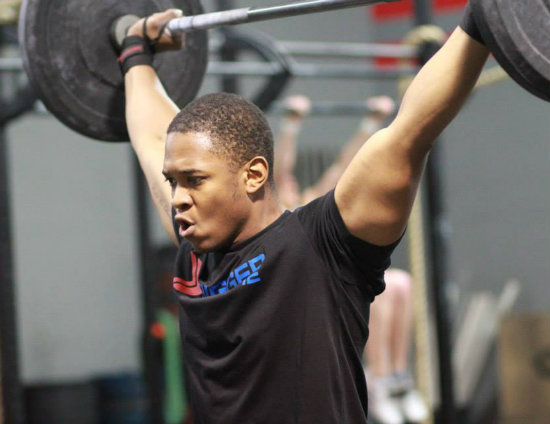When I first started CrossFit, I remember walking over to put my score in and seeing that little round button that said RX. I didn’t know what it was or what it meant… Only that certain people were clicking this and others weren’t. What did RX stand for anyway?
I finally worked up the courage to ask a coach what seemed like a stupid question, “Uh what is that RX thingie for?” And then it was explained to me.
Ever since then, getting to walk up all sweaty and victorious and click that tiny little button has been a goal of mine. Some people have reached the point in their fitness where they can confidently do every WOD as prescribed every time. But many of us are back and forth. We RX a WOD one day; the next day there’s not a chance we’re even trying for it. Sometimes it’s hard to know when it’s appropriate to push for that RX and when it’s better to scale.
So… To RX or not to RX? That is the question.
Coach CT has some great insights into this quandary and helpful tips for guiding the process of knowing when and how to scale.
In his words, “In thinking about whether to RX or not, it’s always important to relate back to this simple equation: Mechanics, consistency, intensity. Those three elements are always important and must come first and foremost before adding any load. So when you’re considering whether or not to RX the barbell weight in a WOD, you always want to ask yourself, “Can I do multiple reps? Can I do multiple reps of this in the middle of the WOD… Let’s say when I’m about two rounds into it?”
CrossFit is all about intensity and it’s important to always remember that. Take Fran for an example: Fran should be done in 8 mins or less. If one athlete scales Fran and they do it in 6 mins and another does it RX and it takes them 15, the scaled athlete got a better workout. The reason is for that is intensity. That’s the aspect of CrossFit that creates change. Whether that means change in your body or change in your mentality about what you can and can’t do.
Intensity will create change…. Which means intensity will create results.
So if you’re pushing to RX a WOD but sacrificing the ability to keep up with the intensity, then the answer is an easy no.
Remember this formula:
Mechanics: Can I air squat properly?
Consistency: Can I air squat properly for multiple reps?
Intensity: Can I air squat properly for multiple reps for time?
You can use this formula for any movement. Once I have these three elements down, I can add load… as long as it doesn’t change any one of those three.
So when is it a good time to go ahead and RX? If you’re smoking every WOD, if you’re going unbroken on what should be heavy sets, if your time is always much faster than everyone else’s but you’re not RXing… then it may be time to step up the weight. If you’re rolling through 3-4 rounds of 15 unbroken power cleans, that weight is probably too light.
If you’re hitting each of those three elements consistently, it may be time to up that weight. That may not be RX yet; it may just be 5 more pounds. Maybe you’re using 55 lbs on the bar and you go ahead and up that to 65. And that may be just what you need to break that plateau.
It can be hard to sometimes to know how to scale each WOD… And that’s why it’s so incredible important to have a trainer guiding you, pushing you, and overseeing your growth. A trainer is probably the most invaluable part of being a CrossFitter. Stay tuned for our upcoming post all about the importance and value of having a trainer when doing CrossFit and how to best take advantage of that as an athlete.

